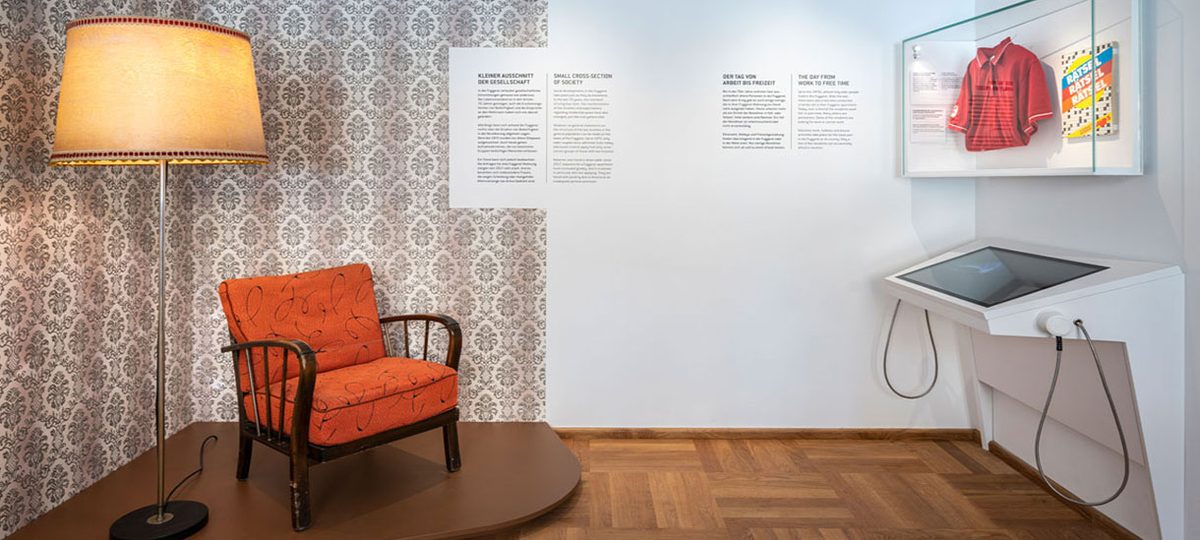Living in the Fuggerei has changed over the last 70 years - and so has the neediness in our society. A tour of a classic 60-square-metre Fuggerei flat answers questions about the changes in everyday life in the Fuggerei.
The "Museum of Everyday Life" in the Fuggerei conveys several important aspects of life in the Fuggerei to visitors: how does one live in the Fuggerei, what does the everyday life of the residents look like, what does indigence mean in daily life and how has all this changed in the last 70 years? The modern exhibition design depicts rooms, symbolic furnishings and functions of a typical three-room flat in the Fuggerei. Two times are juxtaposed: the years after the reconstruction of the Fuggerei, which was bombed in the Second World War, and the time of today.
Interesting discoveries and contemporary testimonies
Original objects from former Fuggerei dwellings and objects owned by present-day Fuggerei residents show how living and households, but also needs, supplies and problems have changed. Five film and media stations bring the past of the Fuggerei to life in films and pictures. Parallel to this, the situation today: Fuggerei residents guide visitors through their flats in film and pictures, show their gardens, workplaces, hobbies and how everyday life works today. Visitors discover how versatile and individual living in the Fuggerei is and was.
The standard of living and comfort have also grown in the Fuggerei, as exemplified by the original bathroom of one of the residents. From the dramatic hardship of the post-war period to the neediness of today: the Fuggerei fulfils its foundation's purpose - with the means, ideas and standards that were and are appropriate for the respective time. The "Museum of Everyday Life" illuminates this development with interesting and often surprising contemporary testimonies. An important source for this is the Fugger Archives, from whose holdings many of the pictures and documents shown in the museum come.
The texts in the museum are written in German and English. The media stations are wheelchair accessible.

![[Translate to English:] Wohnzimmer](https://media.fugger.de/fileadmin/Daten/kategorie-02-fuggerei/art-museum-des-alltags/19-08-30_Fuggerei_011_1200px.jpg?width=792)
![[Translate to English:] Wohnzimmer](https://media.fugger.de/fileadmin/Daten/kategorie-02-fuggerei/art-museum-des-alltags/19-08-30_Fuggerei_011_1200px.jpg?width=900)
![[Translate to English:] Badezimmer](https://media.fugger.de/fileadmin/Daten/kategorie-02-fuggerei/art-museum-des-alltags/19-08-30_Fuggerei_013_1200px.jpg?width=900)
![[Translate to English:] Küche](https://media.fugger.de/fileadmin/Daten/kategorie-02-fuggerei/art-museum-des-alltags/19-08-30_Fuggerei_019_1200px.jpg?width=900)
![[Translate to English:] Schlafzimmer](https://media.fugger.de/fileadmin/Daten/kategorie-02-fuggerei/art-museum-des-alltags/19-08-30_Fuggerei_025_1200px.jpg?width=900)